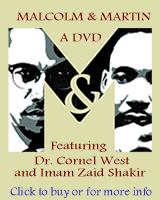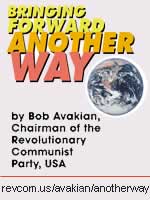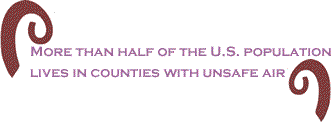
|
|||||||||||||||||||||
|
||||||||||
|
||||||||||
|
The current issue is always free to everyone If
you need the access available to a |
||||||||||
 |
||||||||||
 |
||||||||||
The Environmental Protection Agency held a public hearing in Atlanta on September 5 on whether or not to tighten federal standards on ground level ozone, the main ingredient in smog. A half-dozen environmental justice scholars and activists from the National Black Environmental Justice Network, Clark Atlanta University, Morehouse School of Medicine, Dillard University, and members of the Metropolitan Atlanta Transportation Equity Alliance, a local grassroots group that works on public transit and minority health, called for stricter regulations to clean up the nation’s dirty air. Tougher Standards Needed to Protect the Most Vulnerable EPA is proposing a reduction to between 0.070 and 0.075 parts per million (ppm). However, the agency’s own Clean Air Scientific Advisory Committee (CASAC), an independent body of ozone scientists chartered under the Clean Air Act, concluded that the current ozone standard is not adequate to protect human health and unanimously recommended that the EPA set a new tougher standard in the range of .060 to .070 ppm. Epidemiological and clinical studies reveal that breathing ozone at concentrations at the current standard of 0.080 ppm, decreases lung function, increases respiratory symptoms, inflammation, and increases susceptibility to respiratory infection. Ozone has adverse lung function and cardiovascular effects and can kill even at 0.060 ppm.
A slew of industry representatives, along with a high-ranking official from the National Conference of Black Mayors, urged EPA to keep its current standard. Industry leaders and NCBM claim tougher standard will hurt economic growth. “Cleaner air is important to our communities, but it is not the only thing that affects the health of our people. The health and welfare of our communities is also dependent on having good jobs, economic growth and the quality of life that goes with it,” said Vanessa Williams, NCBM executive director, speaking on behalf of NCBM president Mayor George L. Grace. NCBM president Grace is the mayor of St. Gabriel, Louisiana, a mostly black (72 percent) town of 5,500 residents, located in Iberville Parish (49.7 percent black). St. Gabriel is situated in the heart of Louisiana’s petrochemical corridor, also known as “Cancer Alley,” an 85-mile stretch that runs along the Mississippi River from Baton Rouge to New Orleans. The Baton Rouge Metropolitan area, includes the parishes of East Baton Rouge, West Baton Rouge, Ascension, Livingston, and Iberville, is on this list. The Baton Rouge area is classified as a serious non-attainment area. According to EPA’s 2005 Toxic Release Inventory (TRI), industrial facilities in tiny St. Gabriel emitted 743,071 pounds of chemical releases and 4.1 million pounds of waste from various stationary sources. While St. Gabriel makes up just 16 percent of the Iberville Parish population, nearly 22 percent of the chemical releases and just under half (46 percent) of the total waste generation is found there. Burying Myths, Not People The “stigma of being designated non-attainment,” according to Williams “would have a disparate impact on those communities undertaking economic revitalization efforts and rebuilding, like those in the Gulf Coast in the Aftermath of Katrina. Such impacts manifest themselves in the form of increased costs to industry, permitting delays, restrictions on industrial expansion within an area, impacts on transportation planning, increased costs to consumers and for commercial and consumer products.”
The idea that nonattainment will hurt economic growth is just not true. EPA’s Myths & Facts about Nonattainment fact sheet makes this point. According to EPA, “nonattainment emissions controls are designed to help areas improve air quality even as they grow. Counties surrounding Atlanta, for example, have grown as much as 123 percent over the past decade while, the number of exceedances (of the existing 1-hour standard) have dropped more than 85 percent. Areas are able to improve their air quality without inhibiting economic growth.” The position taken by the polluting industry and by NCBM is not supported by the facts. Given the severity of air pollution problems in cities with black mayors and other locales with large concentrations of African Americans, one would hope the NCBM and other black organization leaders would be calling for stronger standards and cleaner air. “The National Conference of Black Mayors evidently is not speaking for the people they represent,” stated Beverly Wright, director of the Dillard University’s Deep South Center for Environmental Justice in New Orleans. Wright, a well-known expert on Louisiana’s chemical corridor and Hurricane Katrina survivor, recommended EPA set the standard at 0.060 ppm to protect the most vulnerable population in our society. “I heard the NCBM speaker talk about the ‘stigma of nonattainment'. The only stigma we’re concerned about is that African Americans are at the highest risk for getting sick and even dying from ozone pollution. When I get back to New Orleans, I am going to ask my mayor what is his position on EPA ozone standards.” Opponents also argue tougher ozone standards will hurt the economy with few associated health benefits. Again, EPA shattered this myth. According to the agency, improved air quality means people live longer, healthier, more productive lives - and this builds a stronger economy. EPA analyses, based on recent monitoring data, show that meeting the ozone standard can prevent - every year, hundreds of emergency room visits for asthma, thousands of hospital admissions for asthma and other lung diseases - and about half of these hospital admissions are in young children, hundreds of thousands of school absences and more than a million days when people have to reduce their activity - and their productivity - because they are suffering from reduced lung function and other ozone-related respiratory symptoms. It’s About Public Health Stupid Opponents of more stringent ozone standards are bent on using faulty economic arguments to make their point. The courts solidly rejected industry arguments that the health benefits of cleaner air must be balanced against the costs of compliance. The Clean Air Act requires that the EPA set the standard to protect public health “with an adequate margin of safety,” to protect sensitive populations that respond at lower concentrations than healthy adults. In 2002, the Supreme Court unanimously ruled that protecting health was the only basis for the standard –not compromise, economic tradeoffs, or balancing acts that subject millions of Americans to unnecessary environmental health threats — in this case dangerous ozone. Air pollution threatens the health of millions of Americans, especially those who live in urban areas. More than half of the U.S. population lives in counties with unsafe air. In 2002, 71 percent of African Americans lived in counties that violated federal air pollution standards, compared to 58 percent of the white population.
Ground-level ozone or smog affects more than 158 million Americans in ten of the eleven most populous states (California, Georgia, Illinois, Michigan, New Jersey, New York, North Carolina, Ohio, Pennsylvania and Texas). Children are hit especially hard by ozone pollution. More than 61.3 percent of African American children, 69.2 percent of Hispanic children and 67.7 percent of Asian-American children live in areas that exceed the 0.080 ppm ozone standard, while 50.8 percent of white children live in such areas. Air pollution claims 70,000 lives a year, nearly twice the number killed in traffic accidents. Public health costs due to air pollution account for over three-quarters of the total pollution-related public health costs and could be as high as $182 billion annually. An estimated 50,000 to 120,000 premature deaths are associated with exposure to air pollutants. People with asthma experience more than 100 million days of restrictive activity annually, costing $4 billion a year. Getting sick is even more problematic for people of color who are more likely than whites to be uninsured. One-third of Hispanics and one-fifth of blacks were uninsured in 2006, compared with just over ten percent of whites. The Hispanic uninsured rate rose to 34.1 percent in 2006 from 32.3 percent in 2005, and the black uninsured rate rose to 20.3 percent in 2006 from 18.7 percent in 2005. The number of uninsured, as well as the rate without health insurance, remained statistically unchanged in 2006 for whites. Vulnerable populations, such as children, are at special risk from ozone. One of every four American child lives in areas that regularly exceed the U.S. EPA’s ozone standards. Over 27 million children under age 13 live in areas with ozone levels above the EPA standard. And half the pediatric asthma population, two million children, live in these areas. Geography of Pollution High ozone levels cause more than 50,000 emergency room visits each year and result in 15,000 hospitalizations for respiratory illnesses. Ozone pollution is responsible for 10 percent to 20 percent, and nearly 50 percent on bad days, of all hospital admissions for respiratory conditions. Moreover, ground level ozone sends an estimated 53,000 persons to the hospital, 159,000 to the emergency room and triggers 6,200,000 asthma attacks each summer in the eastern half of the United States — where the bulk of the black mayors and the black population reside. There are 19 cities with populations over 100,000 that have majority (over 50%) African-American populations. These majority (over 50%) African-American cities are located in the 14 states: Alabama, Indiana, Louisiana, Maryland, Michigan, Mississippi, Missouri, New Jersey, Ohio, Tennessee, Virginia, District of Columbia, California, Georgia. All of these states, except California, are either adjacent to or are east of the Mississippi River.
There are 27 states and the District of Columbia that have African American mayors. The ten largest cities with black mayors include, Philadelphia, PA, Detroit, MI, Columbus, OH, Memphis, TN, Baltimore, MD, Washington, DC, New Orleans, LA, Cleveland, OH, Atlanta, GA, and Oakland, CA. All of these cities have major ozone pollution and asthma problems. The asthma epidemic hits African Americans especially hard:
In 2004, an estimated 3.5 million African Americans had asthma. African Americans have the highest asthma prevalence of any racial/ethic group; the asthma prevalence rate among Blacks is 36 percent higher than that for whites. African Americans make up about 12 percent of the U.S. population but account for 25 percent of the 4,099 deaths attributed to asthma in 2003. Transportation and Air Pollution The EPA reports that motor vehicles are responsible for nearly one half of smog-forming volatile organic compounds (VOCs), more than half the nitrogen oxide (NOx) emissions, and about half the toxic air pollutant emissions in the United States. They now account for 75 percent of carbon monoxide emissions nationwide. Atlanta, dubbed the “Black Mecca,” has a serious ozone problem. Nearly half (48.6 percent) of the region’s air pollution is from cars and heavy-duty vehicles, which each year spew over 1.5 million tons of pollutants. More cars translate into more traffic gridlock, more air pollution, and more illnesses. Transportation-related air pollution sources exact a major financial toll on the Atlanta region, with public health costs estimated to be as high as $637 million. Efforts to reduce downtown traffic congestion in Atlanta during the 1996 Olympic Games resulted in decreased traffic density which, in turn, resulted in a reduction in ozone pollution and significantly lower rates of childhood asthma events. The number of asthma acute care events decreased 41.6% (4.23 vs 2.47 daily events) in the Georgia Medicaid claims file, 44.1% (1.36 vs 0.76 daily events) in a health maintenance organization database, 11.1% (4.77 vs 4.24 daily events) in 2 pediatric emergency departments, and 19.1% (2.04 vs 1.65 daily hospitalizations) in the Georgia Hospital Discharge Database. In 2007 (between May 1 and September 13), metro Atlanta experienced forty-seven smog alerts — 34 “orange” days and 13 “red” days for ozone, particulate matter, or both. This year, Atlanta was named the top Asthma Capital in the Asthma and Allergy Foundation of America’s annual ranking of the 100 most challenging places to live with asthma.
While car owners may occasionally choose not to drive, those without cars really do not have a choice of not breathing the air. Nearly 35 percent of Atlanta’s African Americans do not own a car. They use public transit. When the Metropolitan Atlanta Rapid Transit Authority (MARTA) was conceived and created in the 1960s, many whites jokingly referred to it as “Moving African Rapidly Through Atlanta.” The system was originally conceived to cover five counties (Fulton, DeKalb, Cobb, Clayton, and Gwinnett). Only Fulton and DeKalb residents voted to join MARTA and pay the one-cent sales tax. Suburban counties surrounding Atlanta (Cobb, Gwinnett, and Clayton), instead of joining MARTA, later created their own “separate and unequal” bus systems, ushering in a form of transportation apartheid that has, for decades, contributed to more car dependency, more traffic gridlock, dirtier air, more respiratory illnesses, less mobility, and widening economic and racial disparities in the region. Enforcing stronger federal ozone standards and providing more alternatives to automobile travel will go a long way in improving air quality, public health and livability of the entire Atlanta metro region, a region that led all others in its black population gains during the 1990s and the 2000-2004 time period. The region added more than 183,000 blacks residents during this period. It’s a matter of growing smarter and growing healthier. The right to breathe clean air is a basic human right that should be protected for Americans, whether we live in cities, suburbs, or rural areas. This article was originally published on DissidentVoice.org. Robert D. Bullard directs the Environmental Justice Resource Center at Clark Atlanta University. His latest book is Growing Smarter: Achieving Livable Communities, Environmental Justice, and Regional Equity (MIT Press 2007). Read other articles by Robert D. published on DissidentVoice.org, or visit Robert D.'s website. Click here to contact Robert D. |
||||||||||
| September
27, 2007 Issue 246 |
|
| Printer Friendly Version in resizeable plain text format format |
 |
 |
 |
| |
| |





































